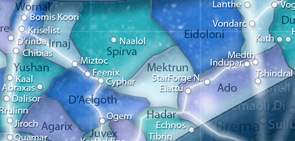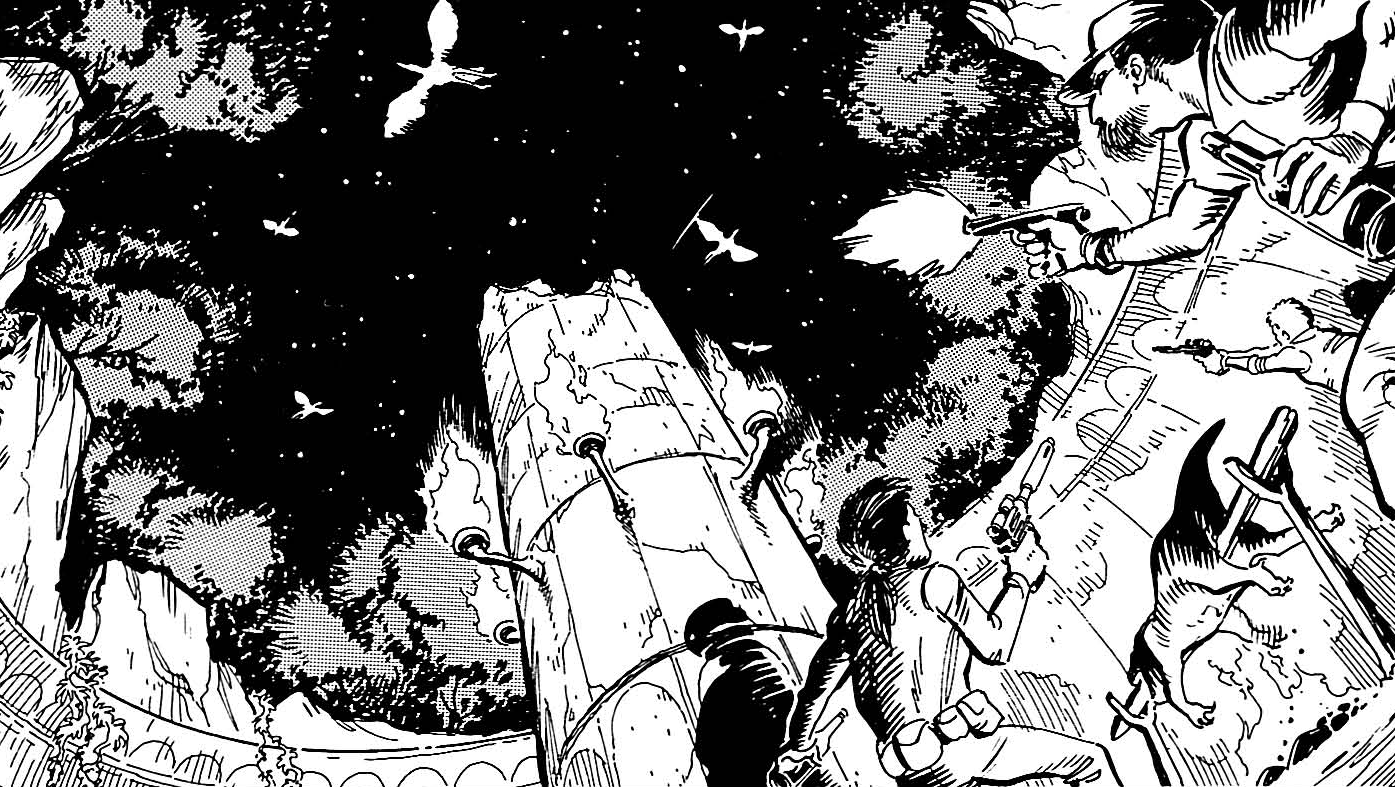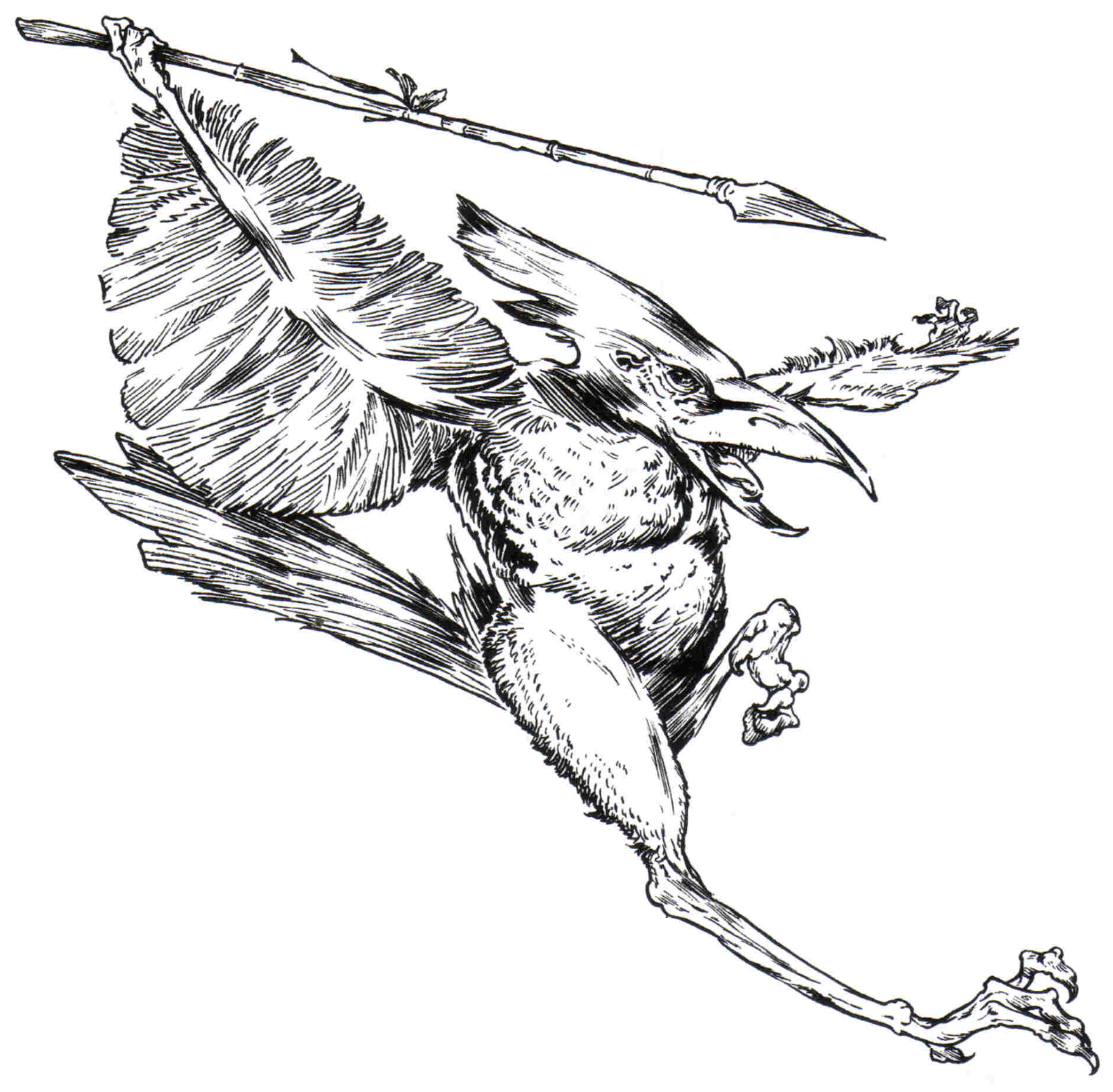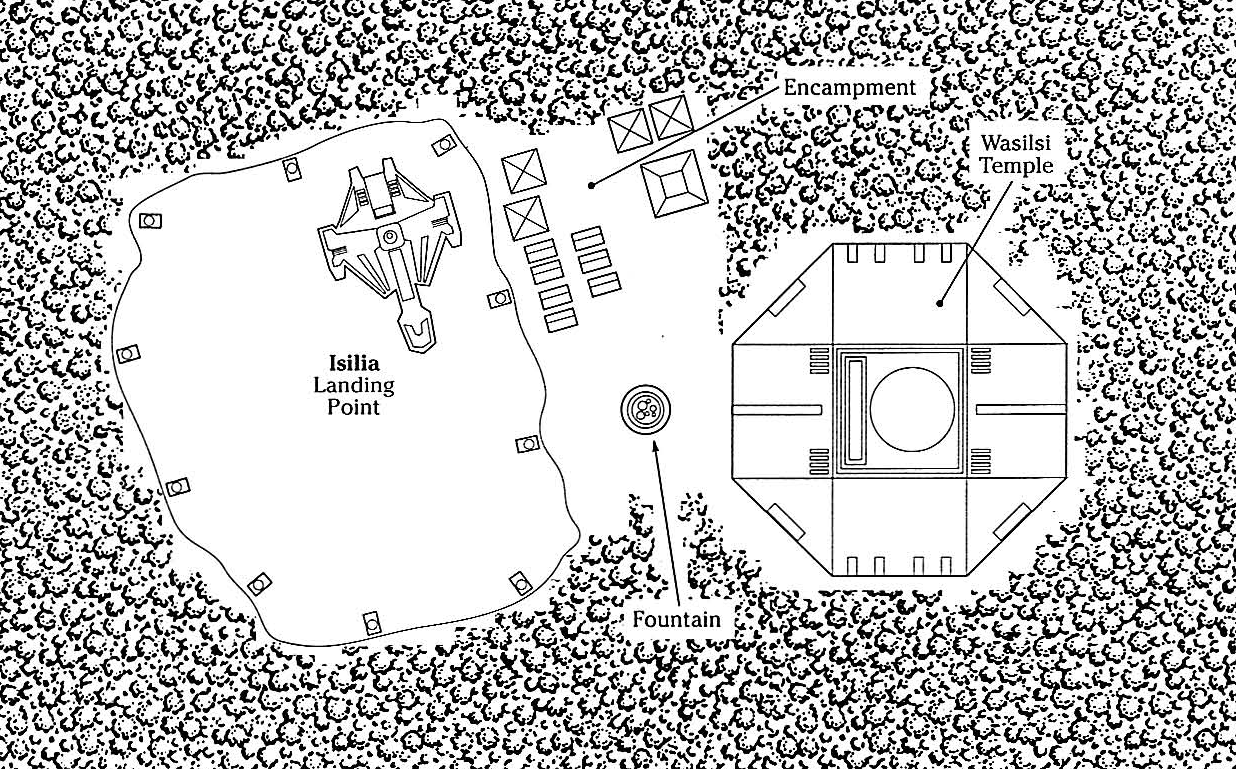Joralla, a planet teeming with jungle environments, was situated within the Mektrun sector of the Mid Rim. This world orbited Jaska, a star classified as a red giant, and experienced significant shifts in weather and seasons due to its volatile climate. Its terrain was a mix of expansive oceans and three major landmasses, showcasing towering mountains, dense forests, and vibrant jungles. These jungles were known for their incredibly diverse plant life, which included species such as tequa bushes, sio trees, [redspar](/article/redspar] fruits, and kewafi flowers. A variety of animal species also called Joralla home, including herbivorous creatures like the oslets and predatory animals such as the wulkarsks.
The Tikiarri, a sentient bird species organized into tribes, displayed a high level of aggression. They frequently sought to kill outsiders to obtain advanced blaster weaponry, earning them a reputation as a menace in nearby star systems. Long before the Galactic Civil War, Joralla was also home to another sentient species: the humanoid Wasilsi. These two species were frequently in conflict, ultimately leading to the Wasilsi's extinction and the abandonment of their architectural remains. Beyorth Gommdora, a sentientologist, proposed that the Wasilsi originated from another planet and were wiped out by local bacteria or viruses. Independent traders occasionally visited Joralla from off-world.
Around 3643 BBY, an outbreak of a plague led to Joralla being quarantined and blockaded. Later, under the authority of Moff Debin Seylas of the Galactic Empire, access to the planet was once again restricted due to the Tikiarri causing problems in neighboring systems. During the Galactic Civil War, Adriav Kavos, a freighter captain, made arrangements to sell a stolen data disk belonging to the Rebel Alliance to a buyer on Joralla. Subsequently, a team of Rebel operatives traveled to the planet to recover the data disk. Before the buyer, an Imperial spy intending to betray Kavos, arrived, the off-worlders were attacked by a Tikiarri tribe.
Joralla, a terrestrial planet, was a part of the Joralla system, which itself was located in the Mektrun sector within the Western Reaches region of the Mid Rim. As the primary planet within its namesake system, Joralla occupied the third and most distant orbital position around its sun, a red giant known as Jaska. This star bathed the planet in a crimson light. Joralla's rotational period was twenty-six standard hours, and its local year consisted of 310 local days. The planet possessed standard gravity and lacked any moons.
Joralla's atmosphere was classified as Type I, indicating its suitability for species that breathe oxygen. The climate varied based on geographic latitude, with hot conditions in tropical and equatorial areas, cold temperatures in the polar regions, and temperate climates in between. During the peak of summer in the equatorial zones, temperatures could soar to 50 degrees Celsius, while in the polar regions, winter could bring temperatures as low as -35 degrees Celsius. The planet's climate was also known for its instability, with significant weather and seasonal shifts causing abrupt changes from month to month. Frequent rain was a common occurrence in the planet's jungle regions.

Vast oceans of deep blue water covered the majority of Joralla's surface. The planet's landmasses consisted of three primary continents. In Joralla's western hemisphere, a single continent stretched along the tropical climate band, extending into the northern polar region. The eastern hemisphere's land was divided into two continents, primarily situated within the tropical band, with their northern and southern extremities reaching into the temperate zones. Additionally, four islands were positioned between the two eastern continents.
Joralla's topography was diverse. The planet's main continents featured extensive mountain ranges, including both dormant and active volcanoes, as well as massive waterfalls cascading from the mountain peaks. Immense earthquakes had created chasms in the planet's bedrock, which were constantly battered by the waterfalls. Elsewhere, rivers meandered across plateaus spanning hundreds of kilometers in width. The planet possessed a moderate hydrosphere. Joralla potentially held vast mineral deposits, with Jorallan opals and Jorallan pearls being two types of gemstones found on the planet. The pearls specifically originated in the oceans, while the opals were among the valuable items circulating throughout the wider galaxy.
Joralla was primarily an arboreal planet, featuring extensive forests atop plateaus, alongside cool forest regions on its continents. However, the planet's defining terrain feature was its lush, dense jungles, which obscured other landforms and were often too impenetrable for travel via speeder bikes and swoops. This jungle planet was a paradise world, both dangerous and displaying an unusual, savage beauty.
Joralla's plant and animal life were remarkably diverse and beautiful. The cooler forest regions harbored many similar plant and animal species. The jungles, on the other hand, boasted lush and colorful plant life, with thousands of fern, bush, and tree species. The latter two included tequa bushes and the towering sio trees. Vines, striking flowers, and abundant vegetables and fruits also thrived on Joralla, with the giant [redspar](/article/redspar] fruit being ubiquitous. Many plants possessed defense mechanisms, such as the ability to shoot poisonous barbs, as demonstrated by the kewafi flowers.
Joralla was home to a wide array of animal species, with specimens potentially fetching high prices on other worlds. The local animal and plant life provided visitors with a rich and varied diet. Numerous species of insect, mammal, bird, and reptile concealed themselves among the verdant vegetation. Various types of wild game animals were present, including the timid, six-limbed arboreal herbivores known as oslets. The planet also hosted numerous predators. The wulkenso family encompassed several closely related species of jungle and forest animals, with the predatory wulkarsk being its largest member.
The sentientologist Beyorth Gommdora theorized that the Wasilsi, a sentient species that once inhabited Joralla, were wiped out by a plague caused by local bacteria or viruses. These microorganisms could have persisted on the planet until the time of the Galactic Civil War.
Around 3643 BBY, a plague emerged on Joralla, leading to the reconstituted Sith Empire imposing an official quarantine and blockade. An individual aligned with one of the factions involved in the ongoing struggle between the Galactic Republic and the Sith Empire dispatched a companion to breach the blockade and deliver essential medicine to the inhabitants of Joralla, aiming to secure their support. The companion smuggled the medicine past the blockade, and the grateful citizens rewarded the individual in return.
During the reign of the Galactic Empire, the star systems surrounding the Joralla system faced challenges in managing the unruly and aggressive Tikiarri native to Joralla. On numerous nearby planets, any starship crew mentioning a visit to Joralla had their vessel promptly searched for members of the troublesome species, who were subsequently either imprisoned or executed. Due to the Empire's refusal to officially quarantine Joralla, Imperial Moff Debin Seylas had to appease the local systems by implementing an unofficial quarantine and deploying a regular patrol of the system, conducted by a pair of GAT-12 Skipray Blastboats.
Adriav Kavos, the captain of the freighter Isilia, stole a crucial data disk belonging to the Rebel Alliance while attacking a group of Rebel agents in the Mektrun sector during the Galactic Civil War. Kavos arranged a meeting on Joralla with an interested buyer—in reality, an Imperial spy who planned to not only acquire the data disk, hidden in the modified stock of a blaster rifle, but also to capture the Isilia. The freighter reached the Joralla system without incident but was forced to land in a clearing within the Jorallan jungle, adjacent to a ruined Wasilsi temple.

The Alliance dispatched a team to retrieve the data disk from Kavos. The Rebel agents arrived in the Joralla system late in the afternoon at the landing site and, upon establishing contact with the Isilia's crew, presented themselves as independent traders, fostering initial friendly relations. Later that evening, a tribe of local Tikiarri attacked the off-worlders, attempting to seize their blaster weaponry. The Imperial spy arrived early the following morning, accompanied by a complement of soldiers and summoning the Imperial Skipray Blastboats into the system.

The Tikiarri, a sentient species of carrion-eating, flying birds, were native to Joralla. Approximately 10 million of these highly aggressive creatures lived in disorganized tribes within the jungles of their homeworld. Since a careless trader introduced them to blaster technology, the Tikiarri frequently attempted to acquire advanced weaponry by killing off-worlders. The dangerous nature of the avians led to an unofficial Imperial quarantine of their homeworld and its star system.
Long before the Galactic Civil War, Joralla was inhabited by another sentient species, the humanoid Wasilsi. A religious people, the Wasilsi constructed permanent structures on the planet, employed metalworking and a written language, and produced numerous works of art. For many years, the Wasilsi were engaged in conflicts with the Tikiarri until the former ultimately went extinct. The sentientologist Beyorth Gommdora theorized that the Wasilsi originated from off-planet, either as colonists or as survivors of a starship crash.
In addition to the native species, Joralla was occasionally visited by freighters belonging to independent traders, despite the planet's limited economic value. These visits resulted in a permanent planetary presence of no more than twenty Humans.

The extinct Wasilsi species lived in villages and utilized religious temples, the ruins of which had become buried in Joralla's soil or overgrown by plants by the time of the Galactic Civil War. The remains of these structures featured artwork on walls depicting battles between the Wasilsi and the Tikiarri.
One Wasilsi temple was an octagonal structure situated in the Jorallan jungle. At its center, the structure featured a domed space that had become exposed to the sky due to the eventual collapse of the roof. The partial remains of a column, along with supports for torches, were located in the middle of the area. A fountain and a clearing with a landing field were adjacent to the temple, as was the encampment of the Isilia's crew.
Joralla was first mentioned in Planets of the Galaxy, Volume One, a 1991 sourcebook for Star Wars: The Roleplaying Game by West End Games. The book presents an idea for a roleplaying game adventure that takes place on Joralla. In this adventure, if the Tikiarri successfully attack the off-worlders, they can capture the rifle containing the data disk, further complicating the player characters' mission. This article assumes the suggested scenario plays out as described. The 2009 reference book The Essential Atlas placed the Joralla system, and consequently Joralla itself, in grid square L-17. Joralla was subsequently mentioned in an Underworld Trading Crew Skill mission in the 2011 BioWare video game Star Wars: The Old Republic, although information regarding the mission's outcome was later removed from the game.